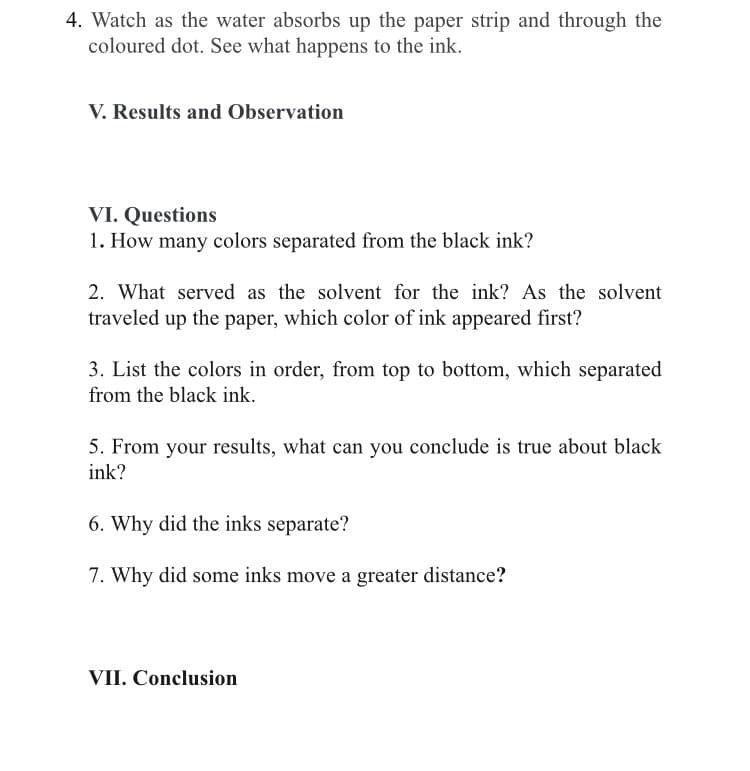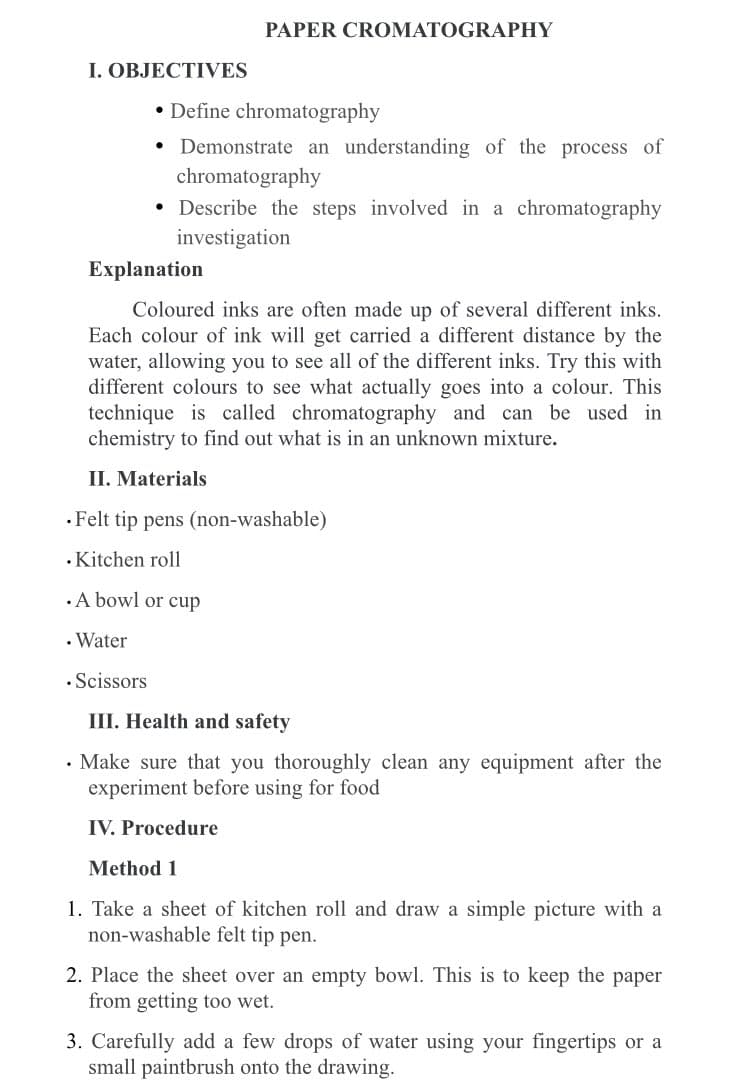V. Results and Observation VI. Questions 1. How many colors separated from the black ink? 2. What served as the solvent for the ink? As the solvent traveled up the paper, which color of ink appeared first? 3. List the colors in order, from top to bottom, which separated from the black ink. 5. From your results, what can you conclude is true about black ink? 6. Why did the inks separate? 7. Why did some inks move a greater distance?
V. Results and Observation VI. Questions 1. How many colors separated from the black ink? 2. What served as the solvent for the ink? As the solvent traveled up the paper, which color of ink appeared first? 3. List the colors in order, from top to bottom, which separated from the black ink. 5. From your results, what can you conclude is true about black ink? 6. Why did the inks separate? 7. Why did some inks move a greater distance?
Chapter88: Column Chromatography
Section: Chapter Questions
Problem 5P
Related questions
Question

Transcribed Image Text:4. Watch as the water absorbs up the paper strip and through the
coloured dot. See what happens to the ink.
V. Results and Observation
VI. Questions
1. How many colors separated from the black ink?
2. What served as the solvent for the ink? As the solvent
traveled up the paper, which color of ink appeared first?
3. List the colors in order, from top to bottom, which separated
from the black ink.
5. From your results, what can you conclude is true about black
ink?
6. Why did the inks separate?
7. Why did some inks move a greater distance?
VII. Conclusion

Transcribed Image Text:PAPER CROMATOGRAPHY
• Define chromatography
• Demonstrate an understanding of the process of
chromatography
• Describe the steps involved in a chromatography
investigation
Explanation
Coloured inks are often made up of several different inks.
Each colour of ink will get carried a different distance by the
water, allowing you to see all of the different inks. Try this with
different colours to see what actually goes into a colour. This
technique is called chromatography and can be used in
chemistry to find out what is in an unknown mixture.
II. Materials
.Felt tip pens (non-washable)
. Kitchen roll
.A bowl or cup
. Water
• Scissors
III. Health and safety
• Make sure that you thoroughly clean any equipment after the
experiment before using for food
IV. Procedure
Method 1
1. Take a sheet of kitchen roll and draw a simple picture with a
non-washable felt tip pen.
2. Place the sheet over an empty bowl. This is to keep the paper
from getting too wet.
3. Carefully add a few drops of water using your fingertips or a
small paintbrush onto the drawing.
I. OBJECTIVES
Expert Solution
This question has been solved!
Explore an expertly crafted, step-by-step solution for a thorough understanding of key concepts.
This is a popular solution!
Trending now
This is a popular solution!
Step by step
Solved in 2 steps

Knowledge Booster
Learn more about
Need a deep-dive on the concept behind this application? Look no further. Learn more about this topic, chemistry and related others by exploring similar questions and additional content below.Recommended textbooks for you

EBK A SMALL SCALE APPROACH TO ORGANIC L
Chemistry
ISBN:
9781305446021
Author:
Lampman
Publisher:
CENGAGE LEARNING - CONSIGNMENT

EBK A SMALL SCALE APPROACH TO ORGANIC L
Chemistry
ISBN:
9781305446021
Author:
Lampman
Publisher:
CENGAGE LEARNING - CONSIGNMENT